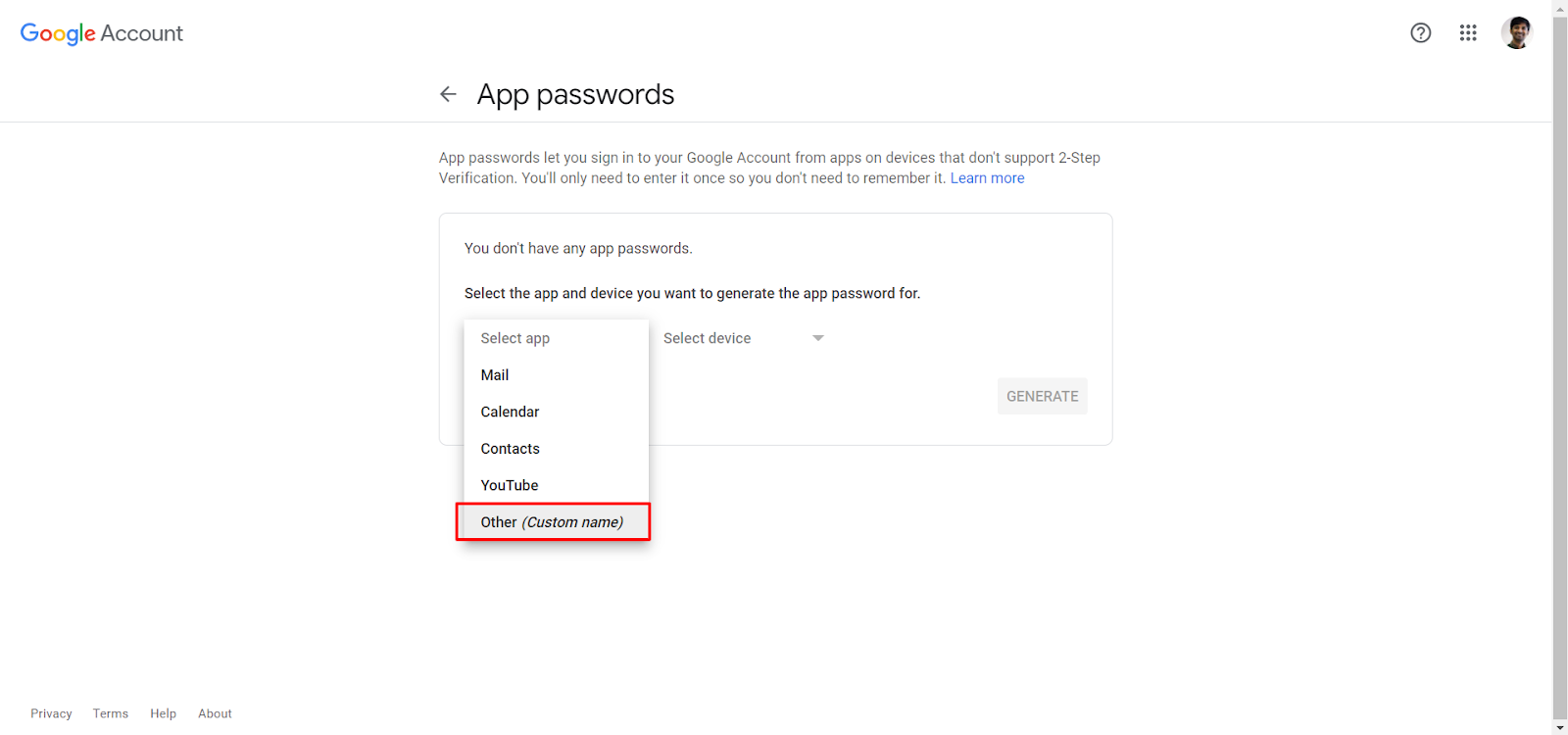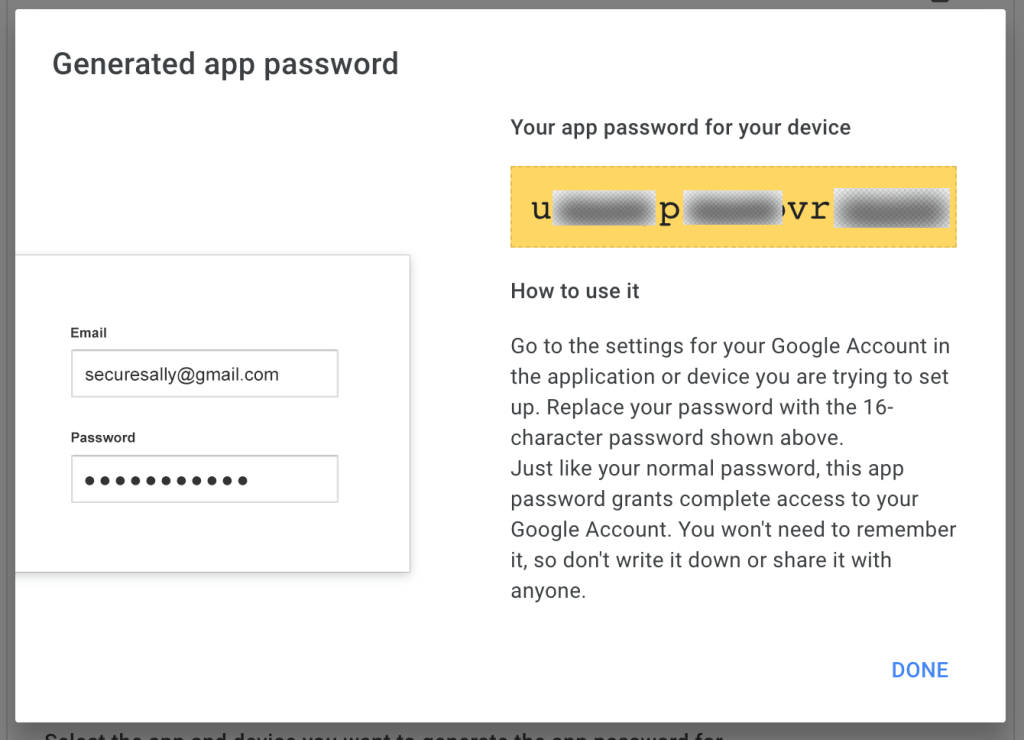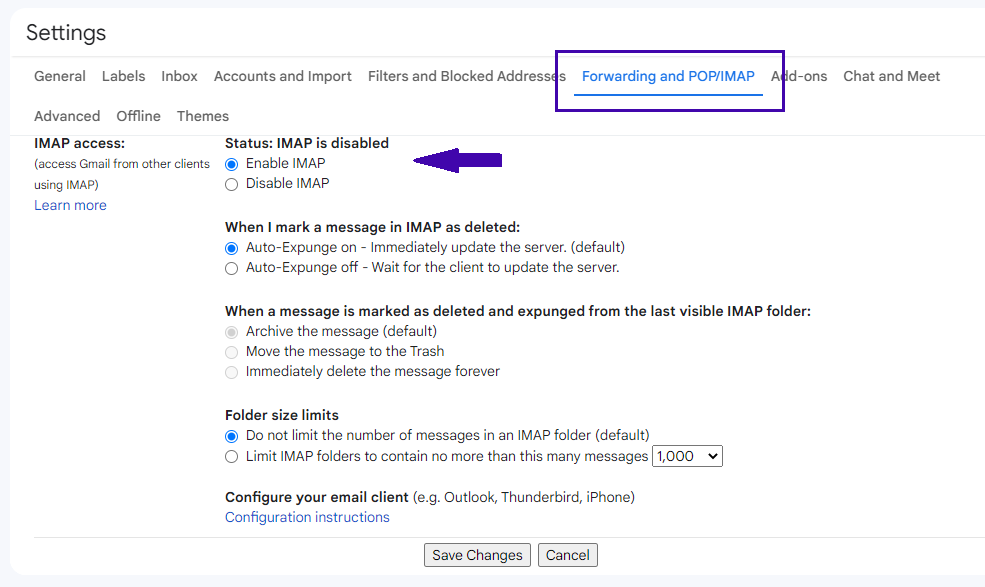
Get Business Email
No domain name required
Get Business Email
With a Free Domain
Gmail is currently known to have around 425+ million users worldwide. This milestone makes the platform the world’s most popular email service provider. As per another report, around 333 billion emails are sent through Gmail every day, making it the largest email sender in the world.
This also means that millions of individuals rely on the Google platform to send messages, share files, and keep their personal and professional lives on track.
However, have you wondered about the technicalities that happen behind the scenes to ensure your email goes to the right inbox at the right time? This is where SMTP Gmail comes in.
What is SMTP?
SMTP, or “Simple Mail Transfer Protocol”, is an email protocol that allows you to send messages from one email account to another email address. Without SMTP, email communication would not exist.
This is because an email protocol is a combination of rules and parameters for the exchange of information between different kinds of email accounts. SMTP is also used to communicate between several servers, helping to establish which servers should receive or route your messages. It is the most commonly used protocol for outgoing emails.
Gmail also has its own SMTP settings that provide your email client or application with the necessary details to send messages securely. When you set up your email client with Gmail SMTP settings, you ensure your messages are not lost in internet space.
Benefits of Gmail SMTP Servers
SMTP Gmail can have several benefits for the email account holders, including:
- Identity Verification
When you enter the correct SMTP settings, Gmail knows your full email ID, password, and server address, which makes them valid credentials.
- Secured Communication
Security is crucial, especially considering the number of malicious attempts to hack emails in the present context. Using SMTP settings with TLS or SSL encryption helps safeguard your emails from such online attacks.
- Business Communication
You can link your custom domain to Gmail with SMTP settings. This enables you to send emails from your business domain via a business email account.
- Reliable Deliverability
Gmail SMTP settings can be optimized for reliability, meaning your emails have a higher chance of landing directly in the recipient’s inbox thanks to Gmail’s efficient servers and anti-spam measures.
- Efficient Integration
Whether you prefer Gmail, Outlook, Apple Mail, or any other email client, the SMTP settings enable effortless integration. This means you can manage your Gmail account from any of your favorite email apps without a hitch.
When to Set Up Gmail SMTP Settings?
SMTP Gmail allows your email client or website to communicate with Gmail, ensuring that sending out your emails to other people is done correctly. Here is when you need to set up your Google SMTP server settings:
- When connecting your Gmail account, you can send emails from an external emailing client such as Thunderbird or Microsoft Outlook.
- While sending transactional or system emails from your website
- While configuring an SMTP Gmail plugin to send emails from WordPress
Gmail SMTP Servers: Steps for Beginners
You will find three different ways to set up a Google SMTP server. These include:
- Gmail’s SMTP Server
- SMTP Relay Service (for Google Workspace)
- Restricted Gmail SMTP Server
Setting Up the Gmail SMTP Server
Setting up an SMTP Gmail server is the most common method for small businesses and individual users. This enables secure email transmission, making it the preferred choice for all personal email accounts. However, to promote responsible emailing, it is advisable to restrict your daily sending limit to no more than 70 emails.
Meanwhile, the steps include:
- SMTP Server Address: Set the server address to smtp.gmail.com.
- Username: Enter your Gmail email address (e.g., yourname@gmail.com).
- Password: Input your Gmail password.
- Port: Use port 587 if the port is TLS or 465 if it is SSL.
- TLS/SSL: Ensure that TLS/SSL is enabled.
Setting Up the SMTP Relay Service (for Google Workspace)
The SMTP relay service provides a more advanced setup for businesses using Google Workspace. This method allows authorized applications to send emails within the organization via Google SMTP servers.
The detailed steps for its setup are:
- SMTP Server Address: Set the server address to smtp-relay.gmail.com.
- Username: Enter your Gmail email address (e.g., yourname@gmail.com).
- Password: Input an app-specific password generated from your Google account.
- Port: Use 587 if the port is TLS or 465 if it is SSL.
- TLS/SSL: Ensure that TLS/SSL is enabled.
Restricted Gmail SMTP Server
The restricted Gmail SMTP server is for businesses or professionals who need to send emails from Gmail to other Google Workspace users only. It is suitable for applications or devices that do not support advanced security protocols.
The steps for its setup process include:
- SMTP Server Address: Set the server address to aspmx.l.google.com.
- Username: Add your Gmail email address (e.g., yourname@gmail.com).
- Password: Enter your Gmail password.
- Port: Use 25 for unencrypted, non-secure communication.
Generating App-Specific Passwords for SMTP Gmail Servers
Users who have enabled two-factor authentication on their Google accounts can still leverage the Gmail SMTP server. This involves generating a password for another app to connect with the system.
The steps to generate your app-specific password include:
Step 1. Log in to your official Google account and go to the security page. Type “app password” on the Gmail search bar.

Step 2. You may be asked to enter your password. Follow the procedure and click ‘Next.’ Select ‘other’ as the device or app.

Step 3. Provide the specific app’s name and click on ‘Generate.’ Copy the 16-digit app-specific password that you get from the system.

Setting Up POP3 and IMAP for Gmail
If you feel that just a Google SMTP server would do the trick for delivering your emails to the right person at the right time, think again. SMTP’s job only involves sending emails; hence, it is only half the story. Therefore, you require additional servers to make it possible to receive emails and make communication a complete circle.
Hence, you need some other servers to receive emails and ensure a complete flow of communication. This is where IMAP and POP3 protocols come in.
What is POP3?
POP3 refers to Post Office Protocol Version 3, a method for transferring emails from a mail server to an email client. The main benefit of POP3 is that it is a simple protocol, and it downloads emails only from the server to the client.
Here are the details of its account type:
- Incoming mail server: pop.gmail.com
- Port: 995
- SSL/TLS encryption: Incoming and outgoing servers
- Outgoing mail server: smtp.gmail.com
- Port: 587
What is IMAP?
IMAP is the abbreviation for “Internet Message Access Protocol.” It is a set of rules that helps you manage your email on various devices, including a computer, phone, or email app. Unlike POP3, IMAP is a two-way protocol that allows the client and the server to change email messages.
Its account details include:
- Incoming mail server: imap.gmail.com
- Port: 993
- SSL/TLS encryption: Incoming and outgoing servers
- Outgoing mail server: smtp.gmail.com
- Port: 587
Steps to Connect POP3 and IMAP on Gmail
Now, we have already highlighted the importance of integrating POP3 and IMAP in Gmail SMTP settings. Meanwhile, look at the associated SMTP steps to complete the process:
Step 1. Open Gmail on your desktop or laptop. In the settings section of your account, find the ‘Forwarding and POP/IMAP’ tab.
Step 2. Scroll down to the section called “POP download”, where you can Enable ‘POP’ for all mail.

Step 3. Enable the “IMAP access” section.

Step 4. Finally, save the changes to your Gmail.
Challenges Associated with SMTP Gmail
The Google SMTP Server may seem to be the perfect solution for helping you send emails correctly. However, this server has its set of disadvantages, like:
- Daily Sending Limit
It restricts users from sending a maximum of 500 emails per day for regular accounts.
- Security Filters
There are strict spam and security filters that may block or delay emails.
- Authentication
It requires proper authentication setup, which can be complex for non-technical users.
- Rate Limiting
Excessive use leads can lead to temporary suspension or rate limiting.
- Configuration Issues
Incorrect setup may lead to email delivery problems.
- Third-Party Integration
Integrating with other applications can be challenging.
What Makes Neo a Better SMTP Service Provider?
Neo is an efficient business email provider, that utilizes SMTP protocol that offers you the most reliable email deliveries. The platform helps marketers manage all their email marketing efforts. Neo’s SMTP service enables you to:
- Create emails and manage contacts
- Work with email delivery engines to simplify email deliveries.
- Leverage high-tech tools to manage various mailing lists
- Set up crucial email campaigns
- Send bulk emails within minutes
- Use a cloud-based email service to create newsletters and manage lists from the desktop.
- Utilize the Advanced Mass Sender to send bulk emails and a Generative AI-powered tool to write email messages.
With Neo, you get a reliable email service that ensures your mail reaches its final destination.
Wrapping up
Working with SMTP Gmail settings in your inbox does not have to be complicated. Gmail is one of the most accessible email service providers and can be used anytime. You can complete the SMTP setup process for Google quickly by following the instructions we have covered here. This will enable you to configure Gmail SMTP, POP, and IMAP account settings easily.
If you are looking for a way to send various cold emails, mail merges, and other mass emails through Gmail, consider Neo. It is an efficient SMTP service that enables you to create emails and manage all your contacts. The server also includes high-tech tools to manage mailing lists and set up email campaigns. So, without further ado, visit Neo now! Also learn about downloading gmail on your computer.
Frequently Asked Questions
1. What is meant by unencrypted for non-secure communication?
The term “unencrypted, non-secure communication” means that the associated data transmitted through these channels is not protected or encoded. The shared information is not secure and can be accessed easily by unauthorized parties, making it unsuitable for transmitting any kind of confidential or private data.
2. Does the Google SMTP Server Work With Two-factor Authentication?
Yes, the SMTP Gmail server works with two-factor authentication (2FA). However, you will need to generate an “app-specific password” when you have 2FA enabled for your Gmail account. This enables you to use the server with applications or devices not directly supporting the two-factor authentication process.
3. Is Gmail SMTP port 465 or 587?
There are different ways to check whether your Gmail SMTP settings use port 465 or 587. To find out the port details, enter smtp.gmail.com as the server address on a device or app. Then, enter one of the above numbers for the port. If you have an SSL port, the number will be 465. For a TLS port, it will be 587.
4. What are Gmail SMTP settings?
SMTP Gmail settings are simply your Outgoing Mail Server settings. SMTP stands for Simple Mail Transfer Protocol, and it is a crucial set of communication guidelines that allow software or apps to transmit email over the Internet.
5. How do I check my Google SMTP server settings?
Checking your Google SMTP server settings is an easy process. Log into your email account and go to your account settings. Search for the SMTP server address in the outgoing SMTP settings. This is how you configure your outgoing mail server settings to ensure your emails are sent correctly.

Get Business Email
No domain name required
Get Business Email
With a Free Domain





.svg%201.svg)
.svg)
.svg)
.svg%201.svg)



